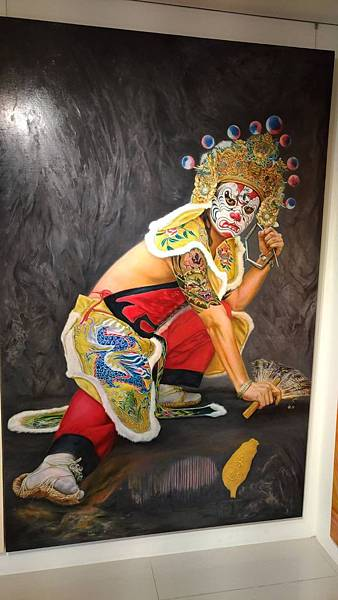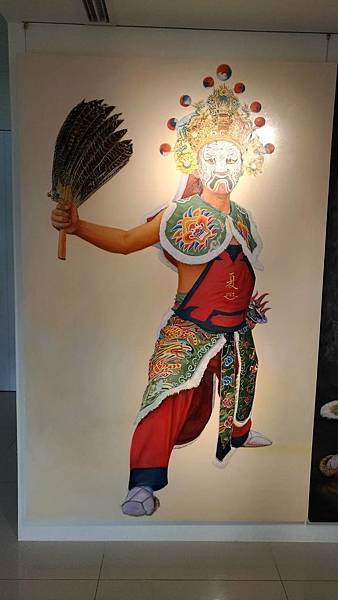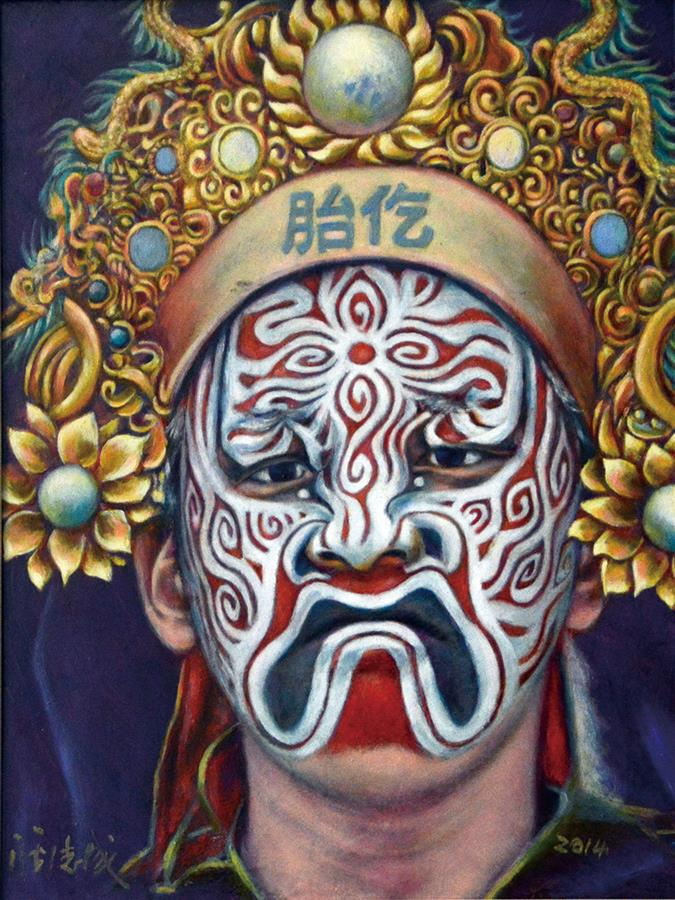The Temple is a Museum of Craft Arts
.png)
The exhibition of "The Temple is a Museum of Craft Arts" is in full swing now in the Buddha Museum. Of all the artifacts and religious sculptures on display, a fantastic painting of an Eight Generals figure with sophisticated face-paint design and fearsome poses draws many viewers' eyes. Facing this focal point of the expo, some visitors cannot help arousing their curiosity by asking questions like, "Who is this guy?", "What are the Eight Generals?", "Is it meaningful of the makeup design for the Eight Generals?" or “Are there any taboos for the performers to follow?”. As questions abound from all corners, we sat down with Zhuang Jian-you (莊洊有), the artist of this painting hung at the Buddha Museum, to tap into this distinctive tradition in Taiwanese folk beliefs.
General Winter is the "guy" in this breathtaking artwork. He squats like a fierce tiger and shows a menacing demeanor, preparing to attack the evil-doers and ghosts and haul them back to trials. He features tiger-designed makeup and holds snake-shaped weaponry to reveal his fearlessness and strength.
General Winter is one member of the mythical temple troupe of Ba Jia Jiang (literally Eight Home Generals). In Taiwanese folk beliefs, besides General Winter, this temple troupe consists of the other three Generals named after seasons (i.e., General Spring, General Summer, and General Autumn), General Fan, General Hsieh, General Liu, and General Gan. The troupe of Ba Jia Jiang assumes the role of bodyguards to protect the main deities or divines, who usually preside over certain temples. As those divine emissaries patrol the goings-on and secure their borders, the patrolling acts in ritual processions. The troupe dramatically lights the way, wards off evil spirits, and scare away plague demons to guard the divine emissaries in palanquins or sedans during religious processions.
And thus, each troupe general has distinguished face paint designs, magic weaponry, and clothing items to avoid messing with the ordinary population. General Summer, for example, shown in Picture 2, is depicted carrying his sacred weapon of a brazier. The exquisite design on his face paints a floral design of a lotus, a symbol of the summer season. General Summer also commonly wears face makeup with flame patterns to showcase his responsibility for torturing prisoners through burning. General Fan, as another example, wears a black face design for his drowning death and usually appears with his pair mate, General Hsieh, in a religious parade. Opposite to Fan's black face, General Hsieh's white facial makeup illustrates his suicidal hanging. General Fan and Hsieh are the Psychopomps in traditional Chinese folk culture. They are myths or deities that escort the freshly deceased from this world to the next.
The Eight Generals have religious roles of capturing and expelling ghosts and evil spirits and protecting the divine emissaries. As a result, the performers of the temple troupe have a code of strict taboos and superstitions to follow. When the performers begin to paint their faces, the so-called "opening the face" means formal ritual kick-off. At the successful completion of face painting and dressing up, the performers will eat the rice offered to the divines, a sign of taking sacred duty. Then the mages will write talismans of sealing mouth for the performers to swallow. Throughout the ceremonies, they are not allowed to talk, laugh, make noise, smoke, drink, or chew betel nuts. At all times, they must look wrathful and stay alert.
During the procession, anyone is not allowed to trespass into an intrusion-safe zone marked out by the Eight Generals. According to tradition, breaking into the zone or destroying the array shall not be tolerated but punished. In the meantime, the troupe may walk out to exorcise evil spirits or demons lingering around.
As the performers of the Eight Generals have significant face paintings, they are considered the incarnation of the deities they play. Hence, they cannot pass through the crotch of ordinary people. Even more, pedestrians or onlookers are forbidden from moving on the bridge when the temple troupe marches under an overpass. The Eight Generals usually protect their heads with feather fans at hand or parasols from the threat of filth in case the parade cannot avoid crossing the overpass.
The performers of the temple troupe are used to observe a gamut of rituals and superstitions to ensure a smooth religious procession. With political and economic changes, the dress-up protections of divine emissaries gradually evolve into a Taiwanese folklore activity. The Eight Generals marching with high, exaggerated sweeping steps in temple fairs usually stop the audience in their tracks. They bring energy with those fabulous martial arts, dance, and music performances. The performances that highlight the essence weaving through the Taiwanese folklore rituals and religious ceremonies still rock the society and culture.

Picture 1: Portrait of General Winter by Zhuang Jian-you
Courtesy of Fo Guang Yuan Pingtung Gallery
#佛光緣美術館屏東館

Picture 2: Portrait of General Summer by Zhuang Jian-you
Courtesy of Fo Guang Yuan Pingtung Gallery
#佛光緣美術館屏東館

Picture 3: Details of General Summer’s Face Painting by Zhuang Jian-you
Courtesy of Fo Guang Yuan Pingtung Gallery
#佛光緣美術館屏東館